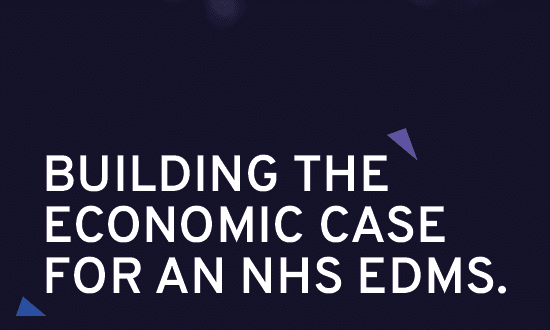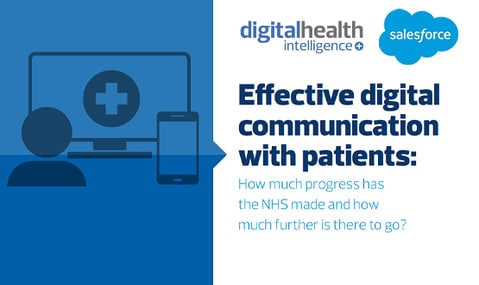Expert view: Paul Richardson
- 26 July 2010
 As you will have seen, the Enterprise-Wide Agreement that the NHS had with Microsoft for server and desktop products expired on 31 May and will not be renewed.
As you will have seen, the Enterprise-Wide Agreement that the NHS had with Microsoft for server and desktop products expired on 31 May and will not be renewed.
While I can imagine trust IT directors being concerned that they will have to start paying for Microsoft licences and support out of their own budgets in future, I think that on balance this is good news.
Why? Well it removes one of the key reasons that stopped trusts experimenting with open source equivalents; equivalents that are increasingly proving to be perfectly adequate for public sector institutions around the globe.
Take Malaysia for example, where there is a powerful commitment to migrating to open source desktops and servers. This commitment has translated through to very high migration figures. The Malaysians maintain a scorecard of adoption across different government agencies and software categories. Take a look here for a summary.
Pilot proposals
I am writing this the day after the publication of the white paper that will restructure the NHS. In it, I read with interest that "NHS services will increasingly be empowered to be customers of a more plural system of IT and other suppliers" and I wonder what this could mean for the adoption of open source software.
For a tiny fraction of the cost of the Microsoft EwA, the Department of Health informatics directorate could establish a small team to explore open source equivalents. Such a team could initially stimulate and supervise pilots and then act as a focal point to share learning and reusable modifications and extensions.
If specific NHS-wide modifications were identified, such a group could assist by supervising extensions and/or adaptations to be written. The result would be an NHS Linux distribution or special version of OpenOffice which could then be made freely available for use and possible further adaption by trusts. My proposal for an initial set of projects for this team is:
- A pilot project to explore the feasibility of adopting the OpenOffice suite instead of Microsoft Office.
- Incidentally, a simple step that the NHS could take to lay the groundwork for adopting OpenOffice would be to encourage the use of OpenDocument formats (.ODT/.ODS/.ODP) both within the NHS and its business partners. The use of these formats would help to ensure interoperability between OpenOffice and Microsoft Office.
- A pilot project to explore the feasibility of adopting a version of Linux (such as Ubuntu, Novell SUSE, Red Hat) as the standard NHS desktop operating system.
- As with OpenOffice, the sheer numbers of desktop PCs in use in the NHS – and hence the potential prize of a significant reduction in license costs for Microsoft Windows – is the justification for this pilot. Initially, this pilot could start with a desk-based feasibility study that reviewed the learning from several countries that have adopted Linux for the desktop in public sector organisations and then factor in any special circumstances for the NHS.
- An exercise to establish feasibility and share best practice in the use and support of a Linux (such as Novell SUSE, Red Hat and Ubuntu) solution for performing common functions such as file serving, print serving, web serving (intranet, extranet and internet), and database serving.
- An implementation of one or more of the existing clinical dashboards using an open source Business Intelligence suite (such as Pentaho) plus a reference implementation of the supporting data warehouse.
- An implementation of an enterprise portal (to give equivalent functionality to SharePoint) in any one (or more) of a number of very sophisticated open source platforms now available, such as LifeRay, Drupal or Joomla.
- With SharePoint client access licenses (CALS) running at £40 per user, plus the significantly greater flexibility afforded by these open source platforms, there are good reasons for exploring this area.
Assessing the risk
Clearly there are issues that need to be addressed when deciding whether or not to use open source software in general and specific packages in particular.
Most of the issues can be lumped together into a general concern that a trust IM&T director would express as having to carry greater risk than using proprietary software.
My assertion is that, on balance, it may well be attractive to assume greater risk in exchange for greater agility and lower costs (and let’s not also underestimate the benefit of not having to worry about auditing proprietary software licence compliance).
To assist in making such a judgement, I propose that the DH maintain an NHS open source directory which includes a maturity profile for each entry. Such a risk profile would rank open source software against criteria which impact risk, such as:
- Programming language
- Size of support community
- How widespread is its usage
- Is commercial support readily available
- How readily available are companies/freelancers with the skills required to support and maintain the package
- Are there are any comparable existing deployments (public sector abroad, public sector UK, healthcare abroad, healthcare UK)
- Is the maintainer NHS approved
- Is license indemnity available
- Is training available?
If we were to look at some accepted uses of open source (a couple of good examples are the Firefox browser and the Apache web server running on Linux), they would all rank highly against these measures.
Was 31 May 2010 the day on which Microsoft’s dominance of the NHS desktop peaked and started to wane? Only time will tell, but it can be no bad thing to experiment with open source options, and the potential for cost savings to the NHS should open source equivalents be adopted are huge and irreversible.
About the author: Paul Richardson started out as a developer and has been working in healthcare for five years. He has worked on a number of programmes for the National Programme for IT in the NHS, and runs a blog on ‘open source health informatics in the UK’.




